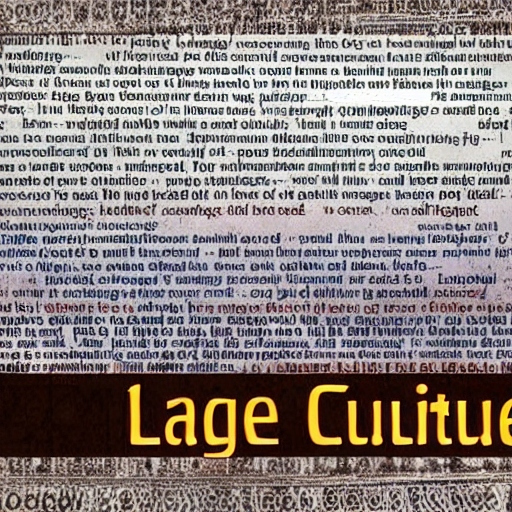Language and culture are inextricably linked, with each shaping the other in complex and fascinating ways. This deep connection presents unique challenges and opportunities in the field of translation. To create accurate and meaningful translations, it is crucial to understand the intricate dance between language and culture and how their relationship affects the translation process. In this article, we will explore the various aspects of this relationship and provide insights into how translators can navigate these complexities to produce culturally sensitive and contextually appropriate translations.
The Impact of Cultural Context on Translation
- Idiomatic expressions and proverbs: Every language is rich with idiomatic expressions, proverbs, and sayings that are steeped in the culture from which they originate. These expressions often have no direct equivalents in other languages, making it challenging to convey their meaning accurately in translation. Skilled translators must find creative ways to capture the essence of these expressions in the target language, either by finding suitable idiomatic equivalents or by providing clear explanations that retain the intended message and cultural flavor.
- Cultural references: Texts often contain references to cultural elements, such as historical events, customs, traditions, folklore, or local cuisine. These references may be obscure or unfamiliar to readers from other cultural backgrounds, creating potential barriers to understanding. Translators must research these cultural elements and either provide the necessary context or find suitable substitutes in the target language that convey the same meaning while respecting the cultural sensibilities of the target audience.
- Nuances and connotations: Words and phrases in one language can carry specific connotations or evoke particular emotions based on cultural associations. For example, a color or animal might symbolize different things in different cultures, affecting the way a phrase is interpreted. Translators must be attuned to these nuances and choose words in the target language that maintain the intended meaning, tone, and emotional impact.
- Politeness and formality: Different cultures have their own unique norms when it comes to politeness and formality in communication. Some languages have intricate systems of honorifics and formal speech, while others may rely more on tone and context to convey respect. Translators must understand these cultural norms and adapt their translations accordingly to ensure that the translated text maintains the appropriate level of politeness and respect in the target culture.
- Context and non-verbal communication: Some languages rely heavily on context and non-verbal cues to convey meaning. This can include the use of gestures, body language, or even silence to communicate information or emotions. When translating texts that rely on these cues, translators must be mindful of their importance and provide additional information or clarification in the target language to ensure that the message is accurately conveyed.
The Translator’s Role in Bridging Language and Culture
To successfully navigate the complex relationship between language and culture, translators must possess a deep understanding of both the source and target cultures, as well as linguistic expertise in the languages they work with. This requires:
- Cultural competence: Translators should continuously develop their cultural knowledge and awareness through research, travel, immersion, or interaction with native speakers. This helps them understand cultural nuances, recognize potential pitfalls, and make informed decisions when translating texts.
- Specialization: Translators often specialize in specific subject areas or industries to develop a deeper understanding of the terminology, conventions, and cultural expectations in their chosen fields. This specialization enables them to produce more accurate and culturally appropriate translations.
- Collaboration: Translators may collaborate with native speakers, subject matter experts, or other translators to ensure that their translations are accurate, contextually appropriate, and culturally sensitive. This collaboration can involve discussing terminology choices, cultural nuances, or seeking feedback on translated text.
Challenges of Machine Translation in Capturing Language and Culture
With the rise of machine translation tools, it’s crucial to acknowledge their limitations in capturing the subtle interplay between language and culture. While these tools have made significant advancements, they often struggle to understand idiomatic expressions, cultural nuances, and context-specific meanings. This can lead to mistranslations or awkward phrasings that fail to convey the intended message or tone. Furthermore, machine translation tools may not recognize culturally sensitive issues, potentially resulting in translations that offend or alienate the target audience. As a result, it is important to rely on skilled human translators who possess the cultural competence and linguistic expertise necessary to accurately convey the complexities of language and culture in translation projects.
Conclusion
Understanding the intricate relationship between language and culture is essential for creating accurate and meaningful translations. Translators must be attuned to the subtleties of both the source and target languages, as well as the cultural contexts in which they are used. This requires a combination of linguistic expertise, cultural competence, and a commitment to ongoing learning and collaboration.
If you are looking for professional translation services that take the complexities of language and culture into account, consider partnering with Slavis Translations. Our team of experienced translators is well-versed in the nuances of various languages and cultures, ensuring that your translations are accurate, contextually appropriate, and culturally sensitive. Reach out to us today to learn more about our services and how we can help you communicate effectively across languages and cultures.




